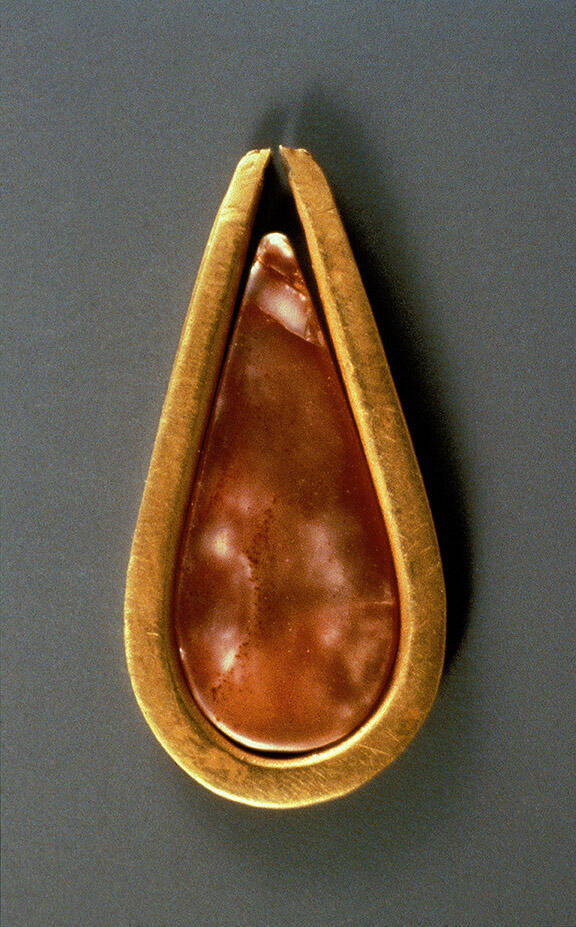February 11th, 2023
"Numerous inlaid shapes, such as droplets or circles, have been found at both Mohenjo-daro and Harappa," writes Dr. Mark Kenoyer, "but we did not know how these were incorporated into ornaments until we discovered a complete pendant at Harappa in 1987. The flat, drop-shaped carnelian inlay is held by a gold frame that has a deep channel on the exterior. Traces of black mastic present in the channel suggest that it once contained inlay, possibly tiny beads of steatite, faience, or even lapis lazuli. This ornament may have been worn on a necklace or possibly in the middle of the forehead,recalling the red vermilion that was used to decorate the part of the hair in earlier figurines. This carnelian pendant may represent the first use of an attachable red ornament on the forehead, a practice common among Hindu women who wear a colored gemstone or plastic dot (tika) on their forehead today."
- Jonathan Mark Kenoyer, Ancient Cities of the Indus Civilization, p. 141.

